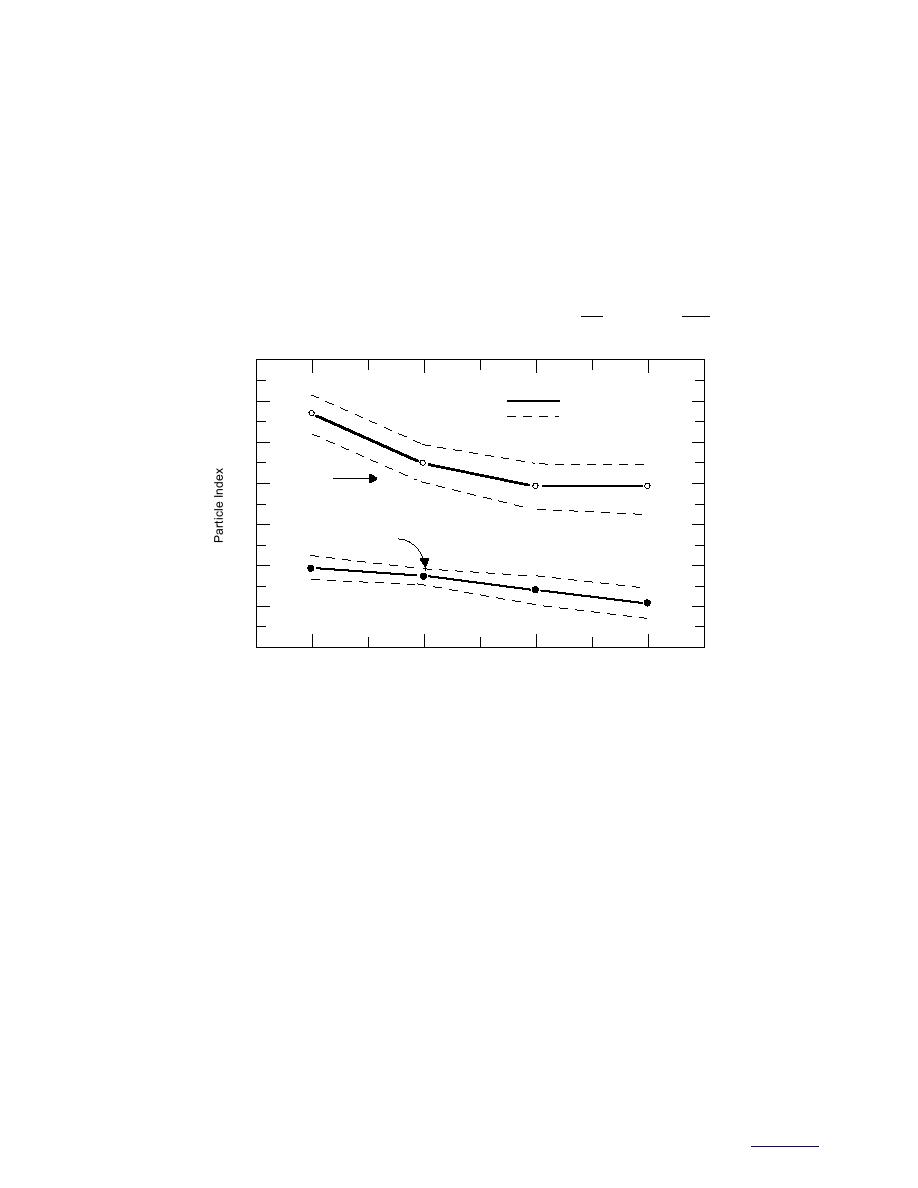
to separate the interaction of angularity and
Ia = 1.25V10 0.2550 32
(2)
roughness on aggregate performance. They pro-
posed that the effect of both angularity and
where V10 = % of voids in aggregates at 10 strokes
roughness be combined into a single term called
per layer and V50 = % of voids in aggregates at 50
strokes per layer.
`rugosity.'
The results (Fig. 5) indicate that the test method
Later, Ishai and Tons (1971) developed an
is capable of distinguishing the difference
index to describe this rugosity, called the specific
between natural rounded and rough, angular
rugosity (Srv). Srv will be approximately equal to
aggregates by the increasing particle index value.
zero for smooth spherical particles:
The test is time-consuming because the parti-
cle index is developed for individual sieve size
Gpx
V
Srv = 100 sr = 1001 -
aggregates. The Michigan Department of Trans-
(3)
Gap
Vp
portation (Michigan DOT 1983) studied the effect
16
Mean
14
Standard Deviation
12
Crushed
Aggregate
10
Natural Rounded
8
Aggregate
6
4
2
No. 4 25
No. 4 19
No. 4 9
No. 4 13
C-1
C-2
C-4
C-3
Gradation of Samples
Figure 6. Particle index for different aggregate gradations.
where Srv = specific rugosity (%)
of combining the different sieve sizes on the parti-
Vsr = volume between the packing vol-
cle index. The effectiveness of the index in differen-
ume membrane and the volume of
tiating between natural and crushed aggregates
macro- and microsurface voids
was consistent for all combinations (Fig. 6).
Vp = packing volume of the particle
Gpx = packing specific gravity
Rugosity
Gap = apparent specific gravity.
Another method based on flow of aggregates
through a given sized orifice can also be used to
The apparent specific gravity can be calculated
differentiate physical aggregate properties. The
initial work with HMA aggregates was done by
using ASTM C 127-88 (1995), Standard Test for Spe-
Tons and Goetz (1968), who developed the pack-
cific Gravity and Absorption of Coarse Aggregate
ing volume concept to characterize the shape,
(AASHTO T 85-85 1998). Gpx is determined from
angularity, and roughness of the aggregates used
the pouring test developed by Ishai and Tons
in bituminous mixtures. The test was developed
(1977). The pouring test involves taking two
for both the coarse (12 mm) and fine fractions.
single-sized samples and pouring them into a
They found that although the shape of the parti-
standard container using a standard procedure.
cle could be quantified separately, it was difficult
One of the particles used is a standard (smooth,
5
to contents



 Previous Page
Previous Page
